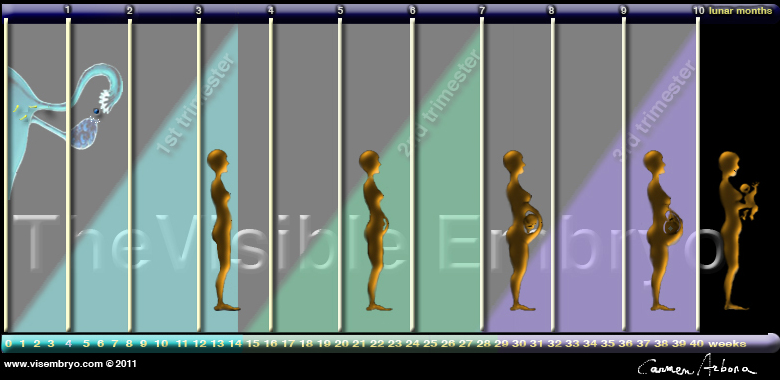|
|
Developmental Biology - SIDS
Nicotine Linked to Sudden Infant Death Syndrome
In utero exposure to nicotine affects postnatal heart development and how an infant responds to adrenalin...
A pregnant woman's exposure to nicotine interferes with her infant's postnatal heart development — specifically its response to adrenalin. This may explain why some babies do not wake up during periods of sleep apnea.
Researchers tested rabbits as model animals in their study investigating alteration to infant cardiac sodium currents. These alterations impair the cardiac sodium current as it adapts to sympathetic tone, leading to arrhythmias potentially involved in SIDS. Their work is published in HeartRhythm the official journal of the Heart Rhythm Society and the Cardiac Electrophysiology Society.
SIDS, or crib death, is the leading cause of death in the first year of life. In utero exposure to tobacco smoke is the highest risk factor in 85% of cases.
"Clinicians often prescribe NRTs to pregnant women who wish to quit smoking in order to reduce the number of crib deaths. However, data shows nicotine alone is sufficient to alter electrical currents within the heart and generate arrhythmias leading to crib death," explains lead investigator Robert Dumaine PhD, in the Department of Pharmacology and Physiology of the University of Sherbrooke, Canada.
Although tobacco smoke contains over 3,000 identified toxic compounds, only nicotine is associated with cardiac arrhythmias in newborns.
In the womb, a fetus cannot breathe on its own. Its heart reacts to reduced oxygen by slowing its heart beat and metabolism to preserve energy. This adaptation is known as "diver reflex."
At the same time, a reduction of oxygen in neonatal blood will trigger secretion of adrenalin (epinephrine) accelerating heart rhythm. Partly due to increased sodium current in the heart — the baby then wakes up. This "resuscitation reflex" appears to be absent in babies with SIDS. Instead, SIDS infants slow heart rate in response to poor oxygen, as if postnatal cardiac development is still in a fetal state.
"This study for the first time, provides direct evidence that in utero exposure to nicotine has postnatal effects on the development of the heart and its response to adrenalin and may provide a basis to explain why some babies do not wake up during sleep apnea. Therefore, it might be worthwhile to revisit the clinical practice of prescribing the nicotine patch and other NRTs to pregnant women."
Robert Dumaine PhD, Department of Pharmacology and Physiology, Faculty of Medicine and Health Sciences, University of Sherbrooke, Sherbrooke, Quebec, Canada .
Investigators measured the effect of nicotine on the response of cardiac sodium current (INa) to adrenergic stimulation in isolated cardiac cells in rabbits. They mated New Zealand female rabbits and after 14 days of gestation, implanted them subcutaneously with two osmotic pumps, each containing 2 ml of nicotine solution. The control group was exposed to saline solution instead of nicotine. Serum concentration of cotinine (nicotine metabolite) was measured every two days.
 Ion channels that change their structure in response to voltage changes are 'voltage-gated ion channels' and regulate concentrations of ions inside and outside the cell. Credit: OpenStax Biology.
Ion channels that change their structure in response to voltage changes are 'voltage-gated ion channels' and regulate concentrations of ions inside and outside the cell. Credit: OpenStax Biology.
Results showed that isoproterenol, an analog of epinephrine (adrenaline) and a potent beta-adrenergic agonist, increased INa by 50 percent in newborn rabbits in the control group but had no effect in newborn rabbits that were exposed to nicotine in utero.
Exposure of rabbit fetuses to nicotine reduced each heart's response to adrenalin after birth. At the onset of sleep apnea, nicotine impaired heart rate acceleration after adrenalin release — a potential mechanism leading to SIDS.
Highlights
Background
In utero exposure to tobacco smoke is associated with sudden infant death syndrome (SIDS) and cardiac arrhythmias in newborns. The arrhythmogenic mechanisms seem linked to alterations of the cardiac sodium current (INa). We previously reported that in utero exposure to nicotine delays the postnatal development of the heart sinoatrial node in rabbits and altered expression of the sodium channels NaV1.5 and NaV1.1 in the atrium surrounding it. These channels react differently to sympathetic stimulation.
Objective
The purpose of this study was to test whether nicotine altered the response of INa to stimulation by the ?-adrenoreceptor agonist isoproterenol in atrial myocytes. Our hypothesis is that changes in the sympathetic response of sinoatrial node peripheral cells may create a substrate for arrhythmia.
Methods
Using the patch-clamp technique we measured the effect of nicotine on the response of INa to adrenergic stimulation in isolated cardiomyocytes.
Results
Isoproterenol increased INa by 50% in newborn sham rabbits but had no effect in newborn rabbits exposed to nicotine in utero. Our data also show that nicotine increases the late sodium current, an effect that may promote QT prolongation.
Conclusion
We provide the first evidence linking fetal exposure to nicotine to long-term alterations of INa response to isoproterenol. These changes may impair INa adaptation to sympathetic tone and prevent awakening from sleep apnea, thus leading to arrhythmias that could potentially be involved in SIDS. Our data also raise concerns about the use of nicotine replacement therapies for pregnant women.
Authors
Michael Biet PhD, Anh Tuan Ton PhD, Jean-Francois Delabre PhD, Nathalie Morin MSc and Robert Dumaine PhD.
Return to top of page
| |
|
Apr 1 2019 Fetal Timeline Maternal Timeline News
 A novel study now links fetal exposure to nicotine with sudden infant death syndrome. Image: Finland Press. Video interview of Robert Dumaine, PhD.
|




